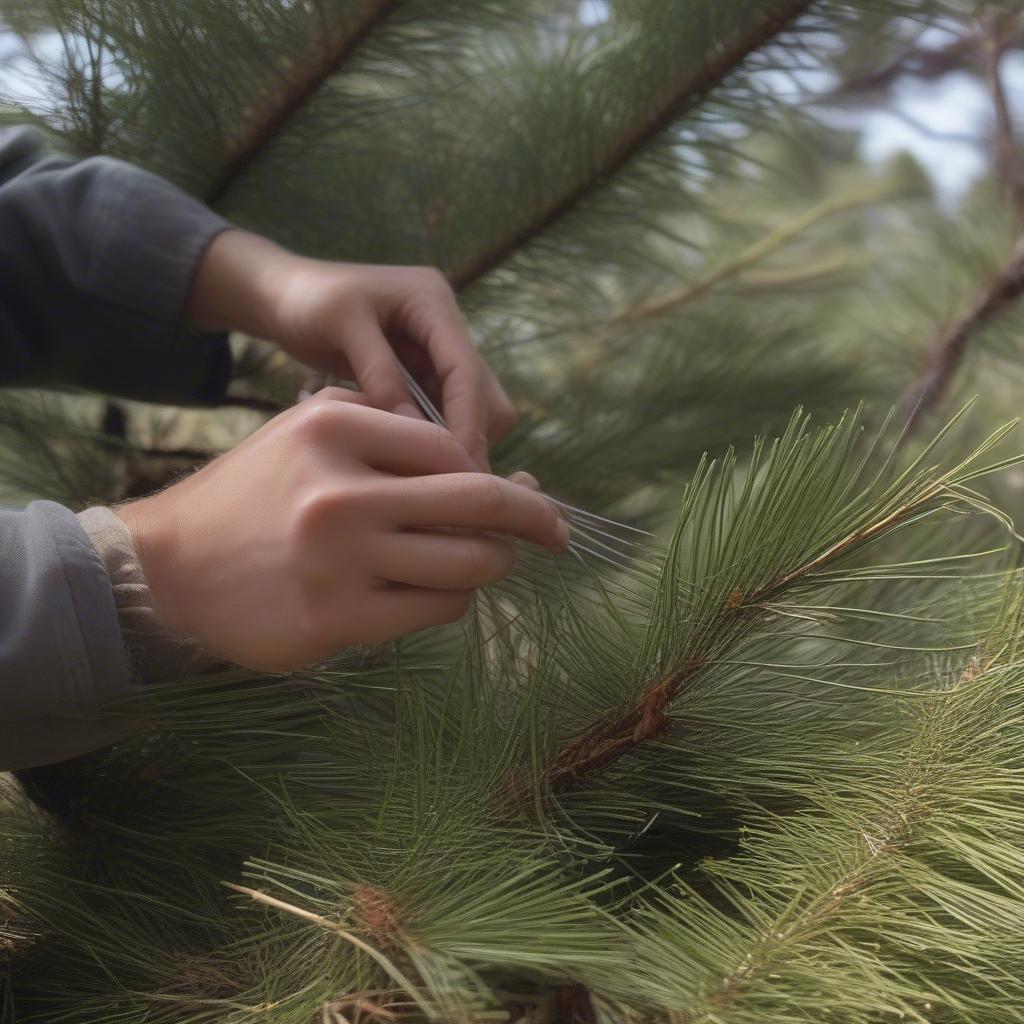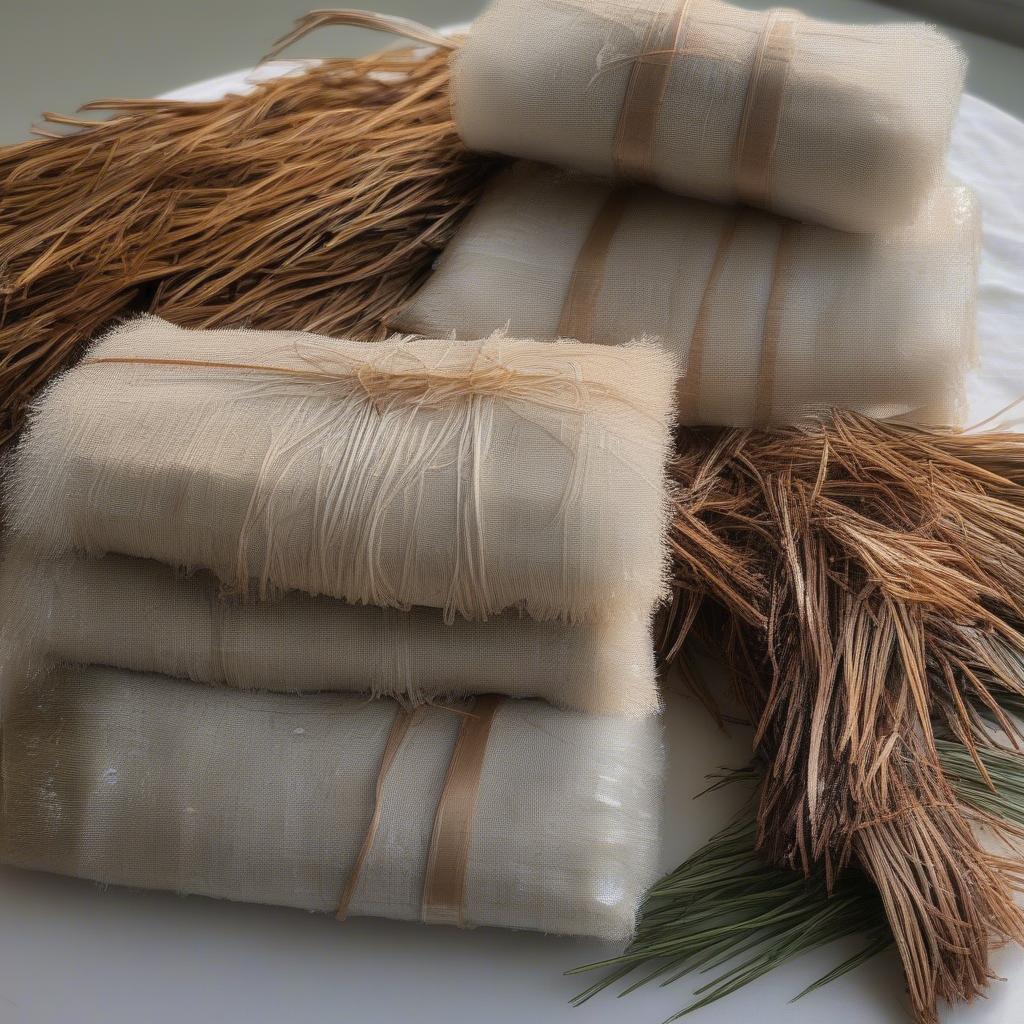Basket Weaving
How to Prepare Pine Needles for Basket Weaving
Preparing pine needles for basket weaving is a crucial step that significantly impacts the final product’s quality and durability. Learn how to properly select, clean, and process pine needles to create beautiful and long-lasting baskets. This guide will take you through the entire process, from gathering your needles to getting them ready for weaving. pine needle basket weaving kits are also a great way to get started if you’re new to this craft.
Gathering and Selecting Pine Needles
The first step in preparing pine needles for basket weaving is knowing what to look for. Longer needles are generally preferred, as they require less joining and create a smoother, more consistent weave. Look for needles that are at least 6 inches long, and ideally 8 inches or longer. Different pine species offer varying needle lengths and textures. Longleaf pine, for instance, is a popular choice due to its long, sturdy needles. Avoid needles that are brown, brittle, or damaged. Freshly fallen needles are preferable, as they are more pliable and easier to work with.
 Gathering Pine Needles for Basketry
Gathering Pine Needles for Basketry
Cleaning Your Pine Needles
Once you have gathered your pine needles, you’ll need to clean them. This process removes dirt, debris, and sap, which can interfere with the weaving process and affect the basket’s appearance. Start by rinsing the needles under cool running water. Gently rub the needles between your fingers to remove any clinging debris. Next, soak the needles in a solution of warm water and mild dish soap for about 30 minutes. This will help remove any remaining sap or residue. Rinse the needles thoroughly under cool water and spread them out on a towel to dry.
Sorting and Bundling
After the pine needles are dry, sort them by length. This will make the weaving process more efficient and result in a neater finished product. You can bundle the needles together using rubber bands or string. This keeps them organized and prevents them from becoming tangled. basket weaving fibers provides more information about different materials used in basket weaving.
Soaking and Softening the Needles
Before you begin weaving, you need to soften the pine needles. This makes them more pliable and less likely to break during the weaving process. Soak the bundles of pine needles in warm water for about 30 minutes. You can add a few drops of glycerin to the water to help further soften the needles and enhance their flexibility. Remove the needles from the water and wrap them in a damp towel. This will keep them moist and pliable while you work. Learning how to pine needle basket weaving involves understanding this crucial softening process.
How long do I need to soak pine needles for basket weaving?
Soaking your pine needles for about 30 minutes in warm water is usually sufficient. You’ll know they’re ready when they become flexible and easy to bend without snapping.
Can I use dried pine needles for basket weaving?
Yes, you can, but they need to be rehydrated. Soaking them is essential to make them pliable again.
What type of pine needles are best for basket weaving?
Longleaf pine needles are a popular choice due to their length and strength, but other long-needled varieties also work well.
Tips for Success
- Gather needles in dry weather for easier cleaning.
- Don’t over-soak the needles, as they can become too brittle.
- Experiment with different pine varieties to find your preference.
 Soaked Pine Needles Ready for Basket Weaving
Soaked Pine Needles Ready for Basket Weaving
Conclusion
Preparing pine needles for basket weaving is a straightforward process that requires a little patience and attention to detail. By following these steps, you can ensure that your pine needles are properly prepared for creating beautiful and long-lasting baskets. Now that you know How To Prepare Pine Needles For Basket Weaving, you’re ready to start your next project! Check out our basket weaving classes knoxville tn for more guidance.
FAQ
- What is the best time of year to collect pine needles? Fall and winter are generally good times, as the needles are readily available after falling from the trees.
- Can I dye pine needles for basket weaving? Yes, you can experiment with natural dyes to achieve different colors.
- How should I store prepared pine needles? Store them in a cool, dry place in an airtight container to prevent them from drying out or becoming brittle.
- What other materials can I use with pine needles in basket weaving? Raffia, twine, and other natural fibers can be combined with pine needles to create interesting textures and designs.
- Where can I find more information about pine needle basket weaving? Many online resources and books offer detailed instructions and patterns.
- Are there any safety precautions I should take when preparing pine needles? Wear gloves when handling pine needles, as some people may experience skin irritation.
- What are some common mistakes to avoid when preparing pine needles? Over-soaking or using damaged needles can lead to difficulties in the weaving process.
Situations You May Encounter
- Your needles are too brittle: This could be due to over-soaking or using old, dried-out needles. Try soaking for a shorter time or using fresher needles.
- Your needles are too stiff: You may not have soaked them long enough. Try soaking them for a little longer, or adding a few drops of glycerin to the water.
- Your needles are dirty or have sap residue: Ensure you’ve thoroughly cleaned and rinsed your needles before soaking.
For further assistance, contact us at Hanoi, Vietnam or Tech Avenue, Suite 12, San Francisco, CA 94105, USA. We have a 24/7 customer support team. Also, explore more helpful articles on our website like sweetgrass basket weaving classes near leland nc.
